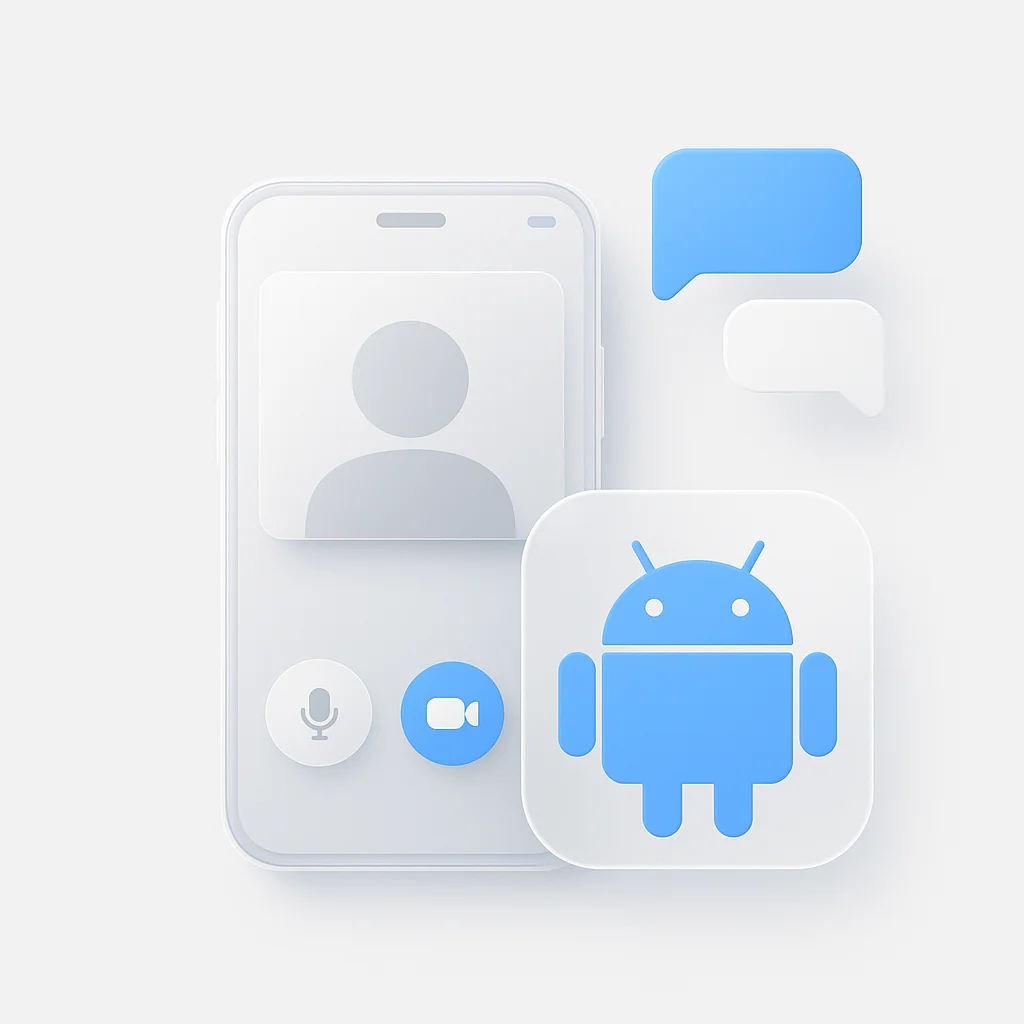Language barriers can feel isolating. Whether you’re yearning to connect with a long-lost relative who speaks a different language or eager to make new friends on your travels, audio translators transform communication. They empower understanding and break down the walls that language differences create.
Introduction
Whether you’re a frequent traveler, do business internationally, or simply love learning new languages, audio translators are game-changers. Gone are the days of leafing through a dictionary or trying to decipher gestures. Today’s technology delivers seamless audio translation, bridging language gaps and fostering communication.
In this blog, we’ll uncover the top 10 audio translators on the market, analyzing their strengths, weaknesses, and ideal use cases.
Tools at a Glance
| Tool name | Overview | Pros | Cons | Best For | Rating |
|---|---|---|---|---|---|
| ScreenApp | Accurate translations with customization and specialized glossaries | Excellent accuracy, customizable, smooth translations | Internet connectivity is a must | Frequent travelers, businesses working across languages | ★★★★★ |
| Google Translate | Broad language support and variety of features | Huge range of languages, other translation features, generally free | Accuracy varies by language, less natural translations | Versatile tool across many languages and situations | ★★★★☆ |
| iTranslate Voice | Excels in real-time conversations and offline translation | Fast real-time translations, offline mode, simple interface | Some features require the paid version | Travelers and people who need fast, in-person translations | ★★★★☆ |
| Microsoft Translator | Integrates with Microsoft products, offers camera translation | Integration with Microsoft suite, camera translation, clear interface | Slightly less intuitive than some competitors | Business users, presentations, translating signage/documents | ★★★★☆ |
| Speak & Translate | Dependable voice and text translation for iOS users | Easy to use, accurate translation, supports Apple ecosystem | Mainly iOS-focused, slightly fewer languages than some competitors | iPhone and iPad users seeking quick, reliable translations | ★★★★☆ |
| Papago | Excels with Asian languages, supports many others | Strong with Asian languages, text translation, offline features | Less natural-sounding translations in some languages | Travelers to East Asia, students of Asian languages | ★★★★☆ |
| TripLingo | Focuses on essentials for travelers, including a phrasebook | Traveler-focused, voice translation with slang mode, cultural information | Translation not the primary focus, may be less accurate | Travelers wanting cultural insights alongside translation | ★★★☆☆ |
| SayHi Translate | Emphasizes straightforward real-time voice translation | Fast, simple interface, good for on-the-go translations | Depth of features is more limited | Spontaneous conversations where speed is prioritized | ★★★☆☆ |
| Waygo | Specializes in visual translation of signs and menus | Focused on visual translation, offline capabilities | Limited to visual/text translation, not voice-based | Travelers to Asia deciphering menus and signs | ★★★☆☆ |
| iTranslate Converse | Designed for real-time spoken conversations | Optimized for natural conversations, background noise filtering | Can struggle if accents are heavy | Fluid conversations with minimal button pressing | ★★★☆☆ |
Top 10 Audio Translators
1. ScreenApp

- Summary: ScreenApp stands out with its exceptionally accurate and natural-sounding translations. Features like customization and specialized glossaries further enhance its precision.
- Pros: Excellent accuracy, customizable, smooth translations
- Cons: Internet connectivity is a must
- Best for: Frequent travelers, businesses working across languages, language learners focused on accuracy.
- Personal Assessment: ScreenApp is a top contender for those who prioritize seamless and accurate translations that sound like a native speaker.
- Rating: 5/5
2. Google Translate
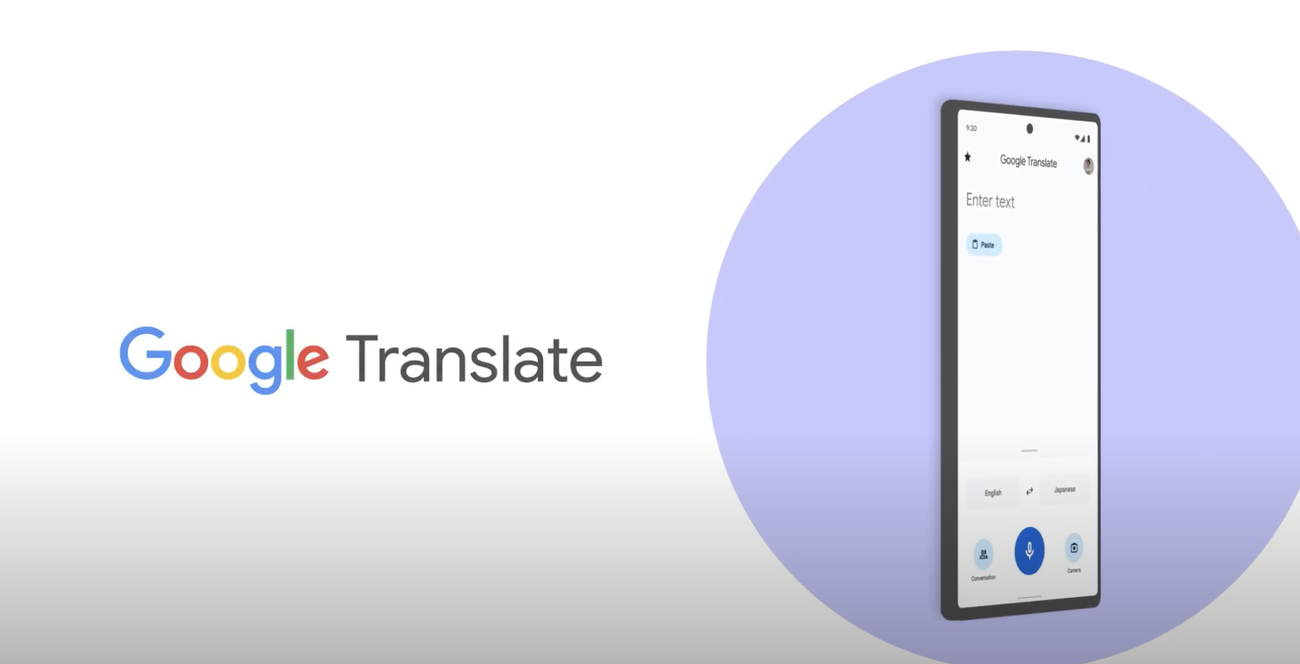
- Summary: Google Translate is a popular choice for its broad language support and variety of features (text, image, voice translation).
- Pros: Huge range of languages, other translation features, generally free
- Cons: Accuracy varies by language, less natural translations in some cases.
- Best for: Those needing a versatile tool across many languages and situations.
- Personal Assessment: A solid all-arounder, but some languages may be better served by specialized tools.
- Rating: 4/5
3. iTranslate Voice
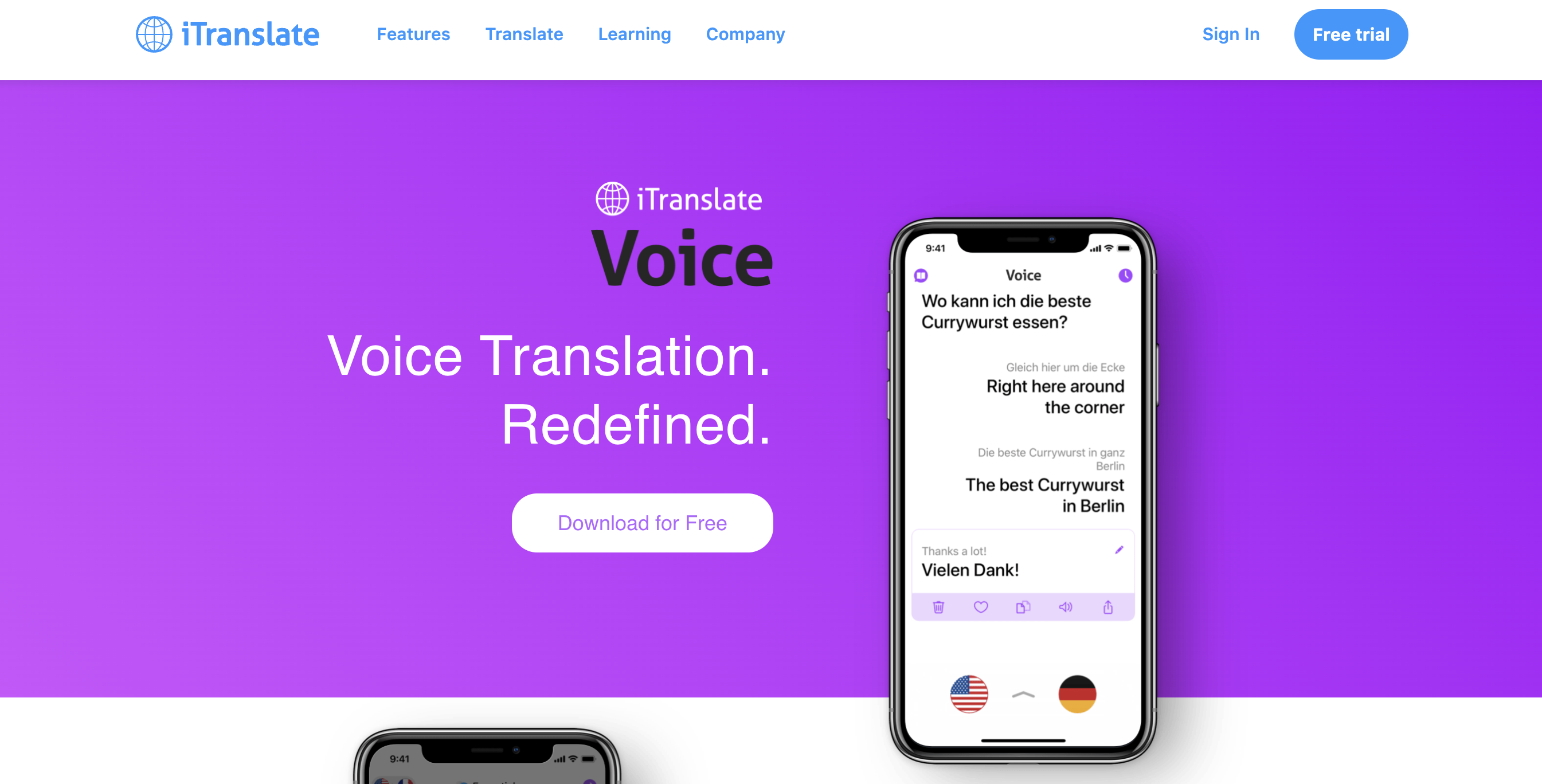
- Summary: iTranslate Voice excels in real-time conversations and offline translation capabilities.
- Pros: Fast real-time translations, offline mode, simple interface
- Cons: Some features require the paid version
- Best for: Travelers and people who need fast, in-person translations
- Personal Assessment: Perfect for quick, convenient translations on the go.
- Rating: 4/5
4. Microsoft Translator
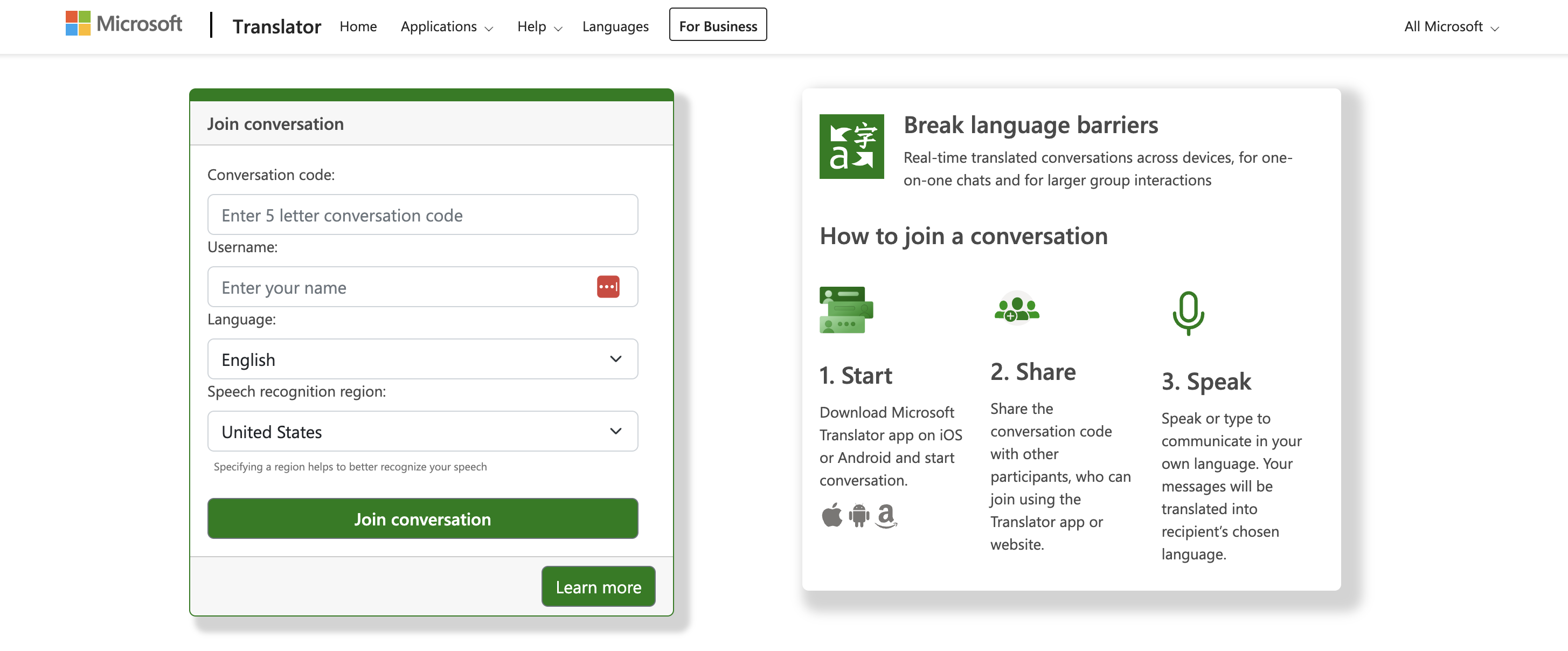
- Summary: Microsoft Translator integrates well with other Microsoft products and offers useful features like camera translation for text on signs or documents.
- Pros: Integration with Microsoft suite, camera translation, clear interface
- Cons: Slightly less intuitive than some competitors
- Best for: Business users, presentations, translating signage/documents
- Personal Assessment: A reliable tool, especially for those already invested in Microsoft’s ecosystem.
- Rating: 4/5
5. Speak & Translate
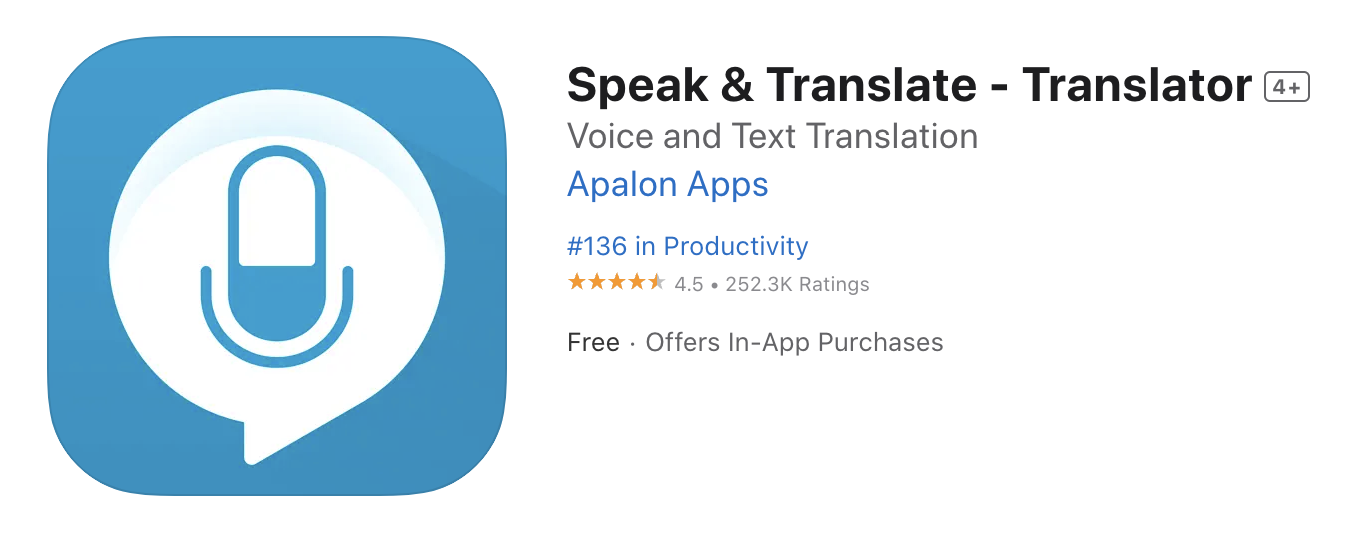
- Summary: A well-regarded app for iOS users, Speak & Translate offers dependable voice and text translation in a straightforward package.
- Pros: Easy to use, accurate translation, supports Apple ecosystem
- Cons: Mainly iOS-focused, slightly fewer languages than some competitors
- Best for: iPhone and iPad users seeking quick, reliable translations
- Personal Assessment: A solid choice for Apple users who value simplicity.
- Rating: 4/5
6. Papago
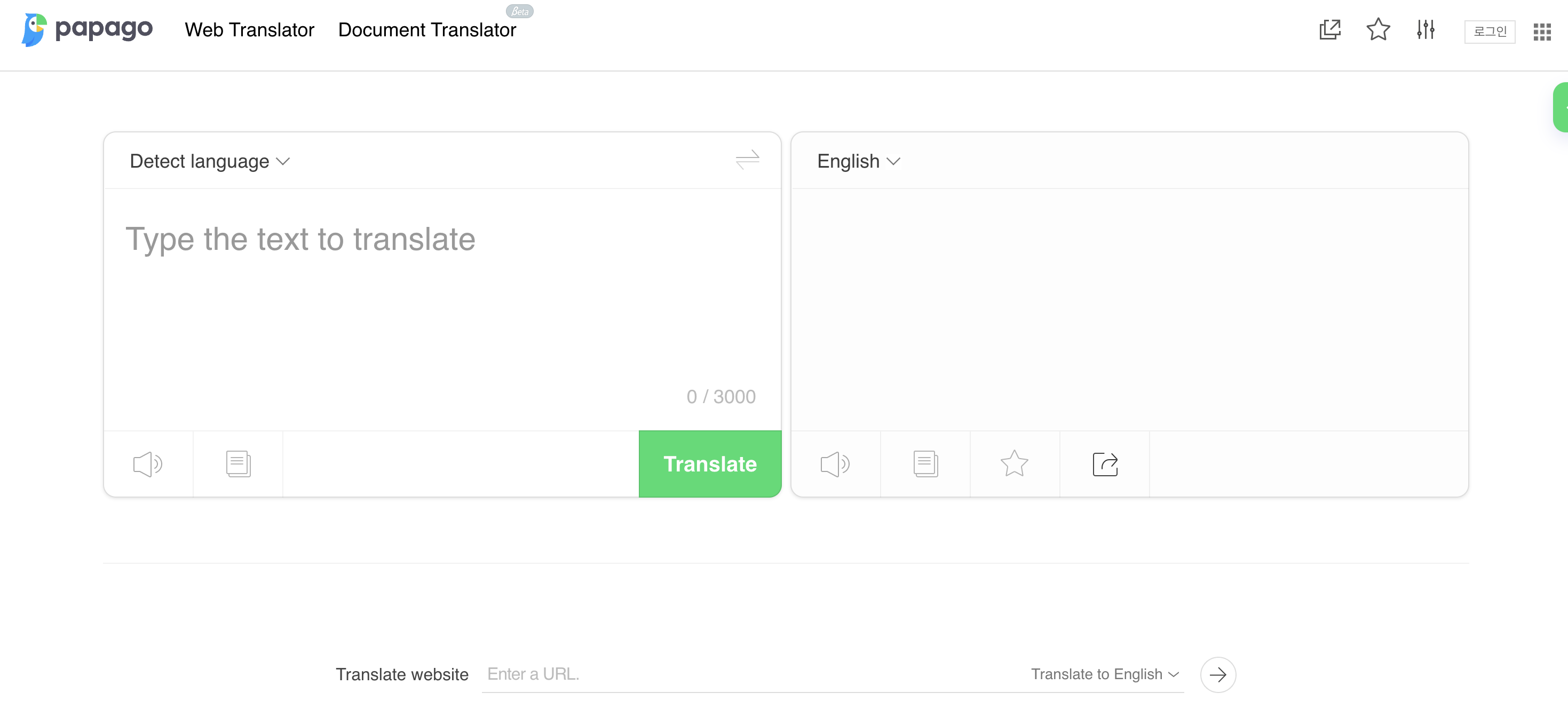
- Summary: Papago excels with Asian languages like Korean, Japanese, and Chinese, while also supporting many others.
- Pros: Strong with Asian languages, text translation, offline features
- Cons: Occasionally less natural-sounding translations in some languages
- Best for: Travelers to East Asia, students of Asian languages
- Personal Assessment: Ideal if your focus is on Asian language translation.
- Rating: 4/5
7. TripLingo
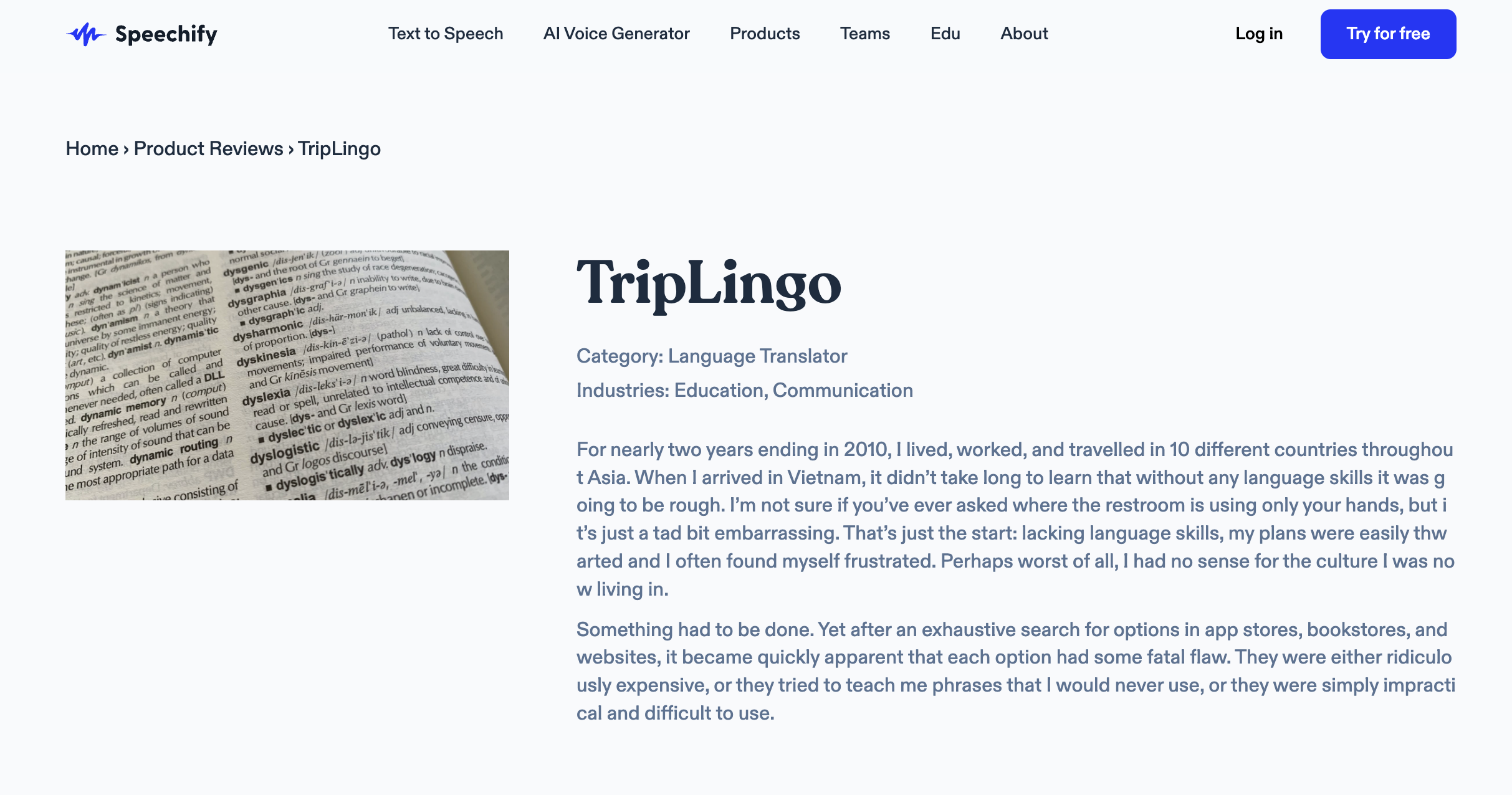
- Summary: TripLingo focuses on essentials for travelers, including a phrasebook, currency converter, and cultural tips. Translation is one of its features.
- Pros: Traveler-focused, voice translation with slang mode, cultural information
- Cons: Translation not the primary focus, may be less accurate than specialized tools
- Best for: Travelers wanting cultural insights alongside translation
- Personal Assessment: Great for overall travel support, a bit less focused on pure translation accuracy.
- Rating: 3.5/5
8. SayHi Translate
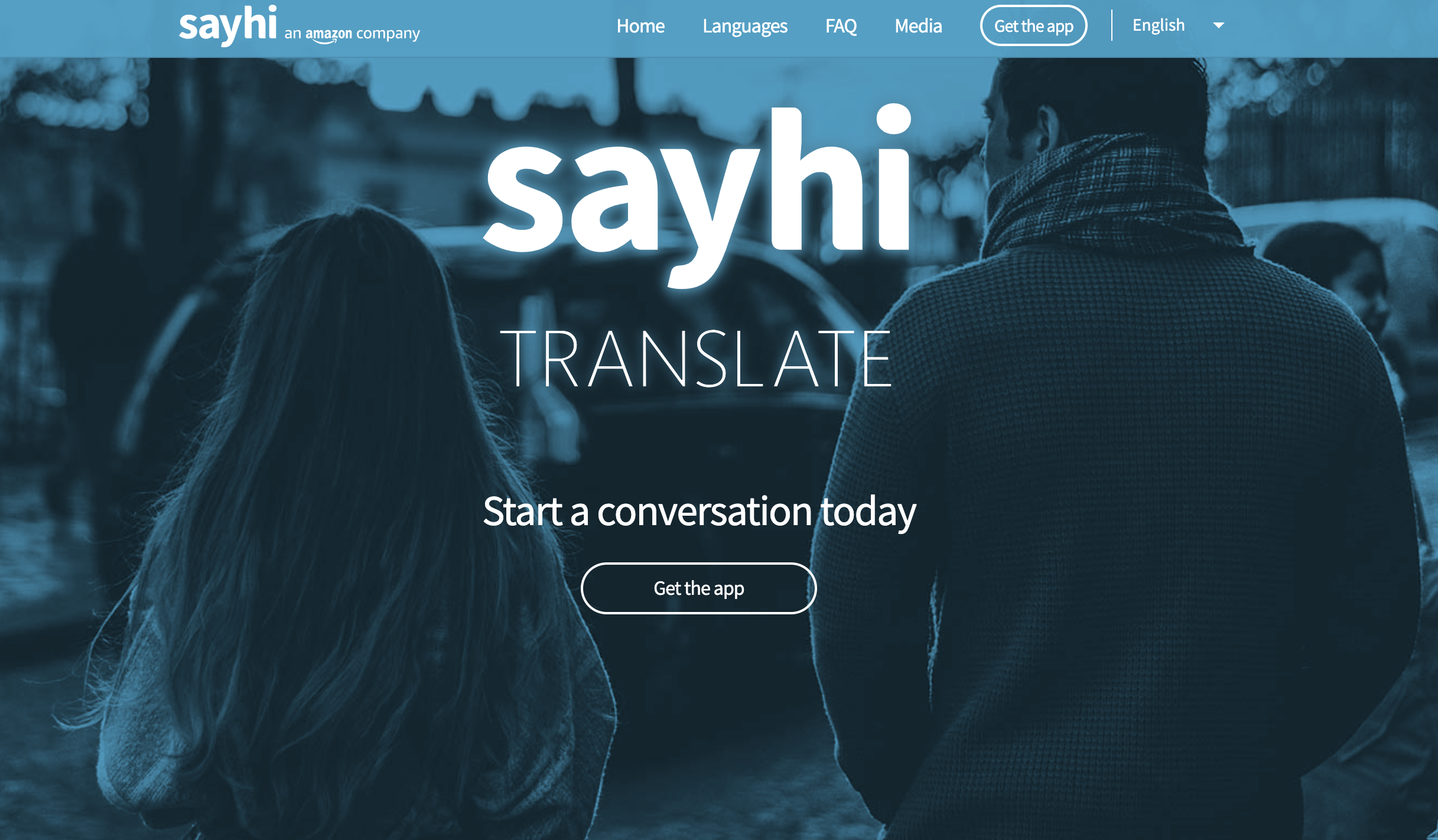
- Summary: SayHi emphasizes straightforward real-time voice translation for quick conversations.
- Pros: Fast, simple interface, good for on-the-go translations
- Cons: Depth of features is more limited
- Best for: Spontaneous conversations where speed is prioritized
- Personal Assessment: Great for “in the moment” translation needs
- Rating: 3.5/5
9. Waygo
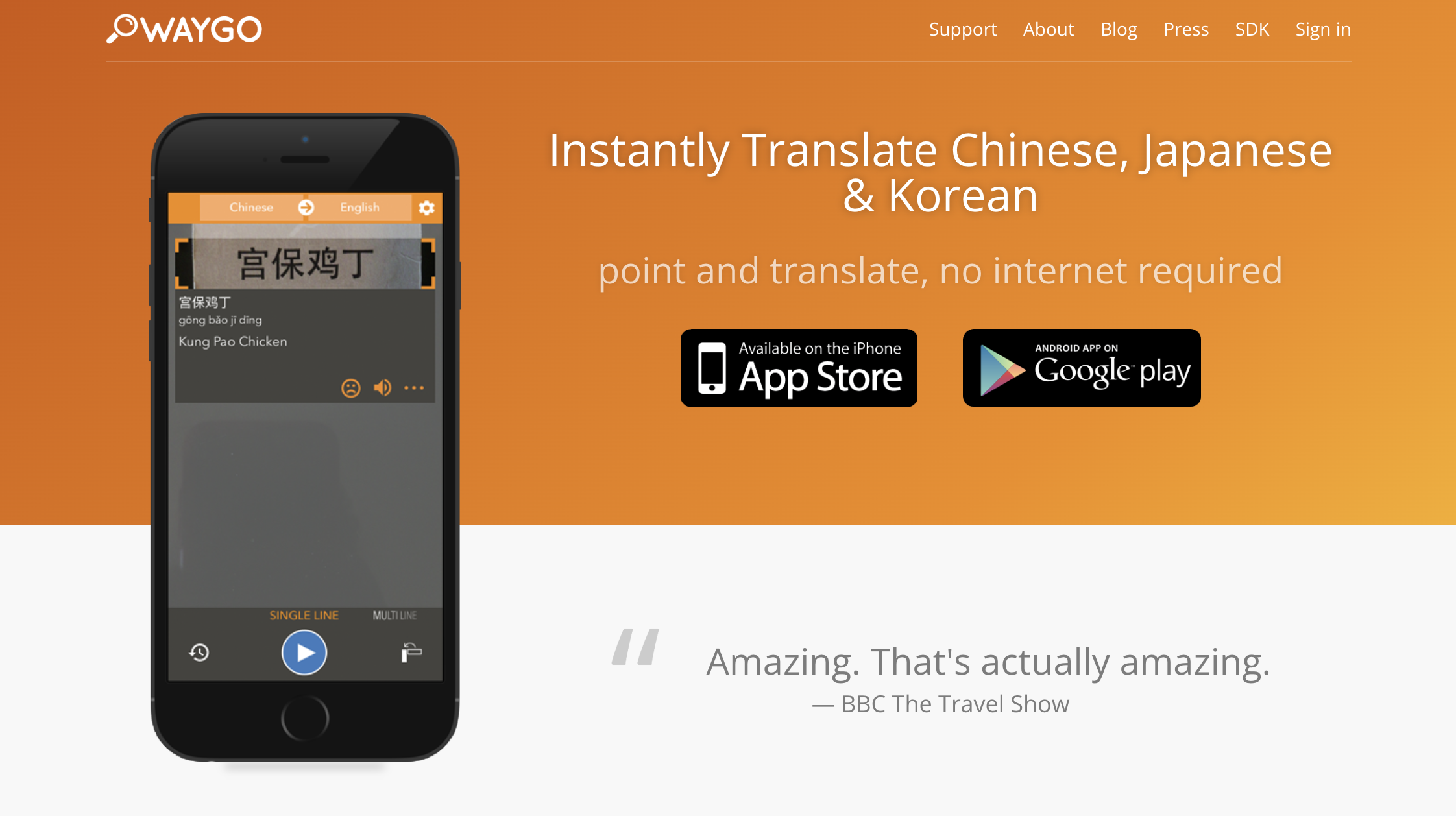
- Summary: Waygo specializes in visual translation of signs and menus, particularly for Asian languages.
- Pros: Focused on visual translation, offline capabilities
- Cons: Limited to visual/text translation, not voice-based
- Best for: Travelers to Asia deciphering menus and signs
- Personal Assessment: Highly niche, but excellent in its use case.
- Rating: 3.5/5
10. iTranslate Converse
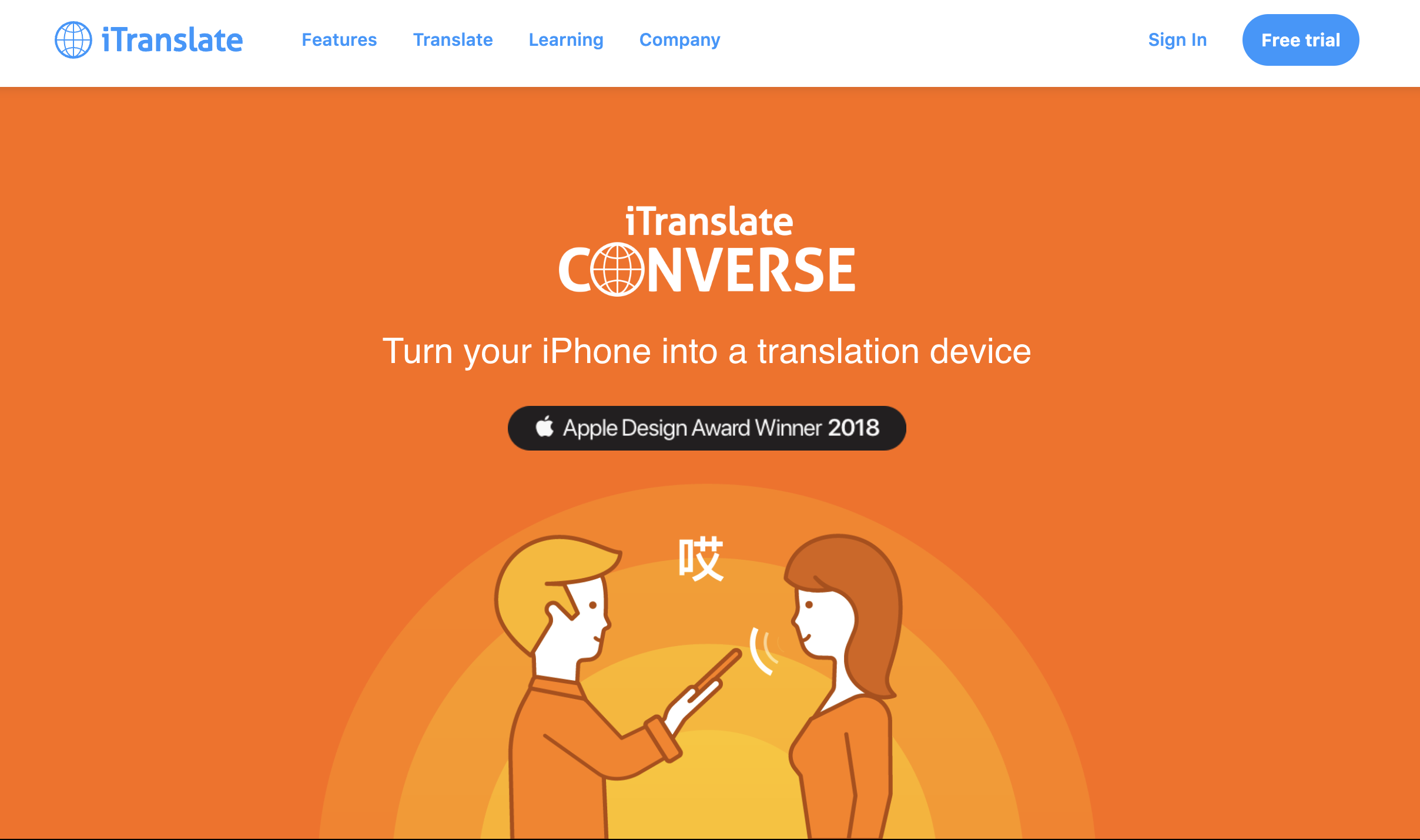
- Summary: iTranslate Converse is designed explicitly for real-time spoken conversations, aiming for a seamless, hands-free experience.
- Pros: Optimized for natural conversations, background noise filtering
- Cons: Can struggle if accents are heavy
- Best for: Fluid conversations with minimal button pressing
- Personal Assessment: Great when it works well, can be less optimal in noisy environments.
- Rating: 3.5/5
Conclusion
Audio translators break down language barriers, opening up a world of possibilities for travelers, businesses, and language learners alike. The technology continues to improve, offering increasingly accurate, natural-sounding translations that make cross-cultural communication feel effortless.
Key Takeaways
- No one-size-fits-all: The best audio translator for you depends entirely on your specific needs. Prioritize the factors that are most important to you, whether that’s exceptional accuracy, a wide range of languages, offline capabilities, or user-friendliness.
- Accuracy is paramount…sometimes: While all strive for accurate translations, tools vary in how consistently they achieve it. For high-stakes conversations or nuanced language learning, prioritization of accuracy is crucial.
- Consider the context: Travel, business, and casual learning scenarios each present different needs. A traveler might need offline capabilities, while a business user might focus on professional, specialized vocabulary.
- The market is evolving: Audio translation technology is rapidly advancing. It’s worth keeping an eye on updates and new entrants, as your ideal tool might shift over time.
This article has provided a starting point for exploring the amazing world of audio translators. Do your research, try out different options, and get ready to experience how they’ll transform the way you communicate!



